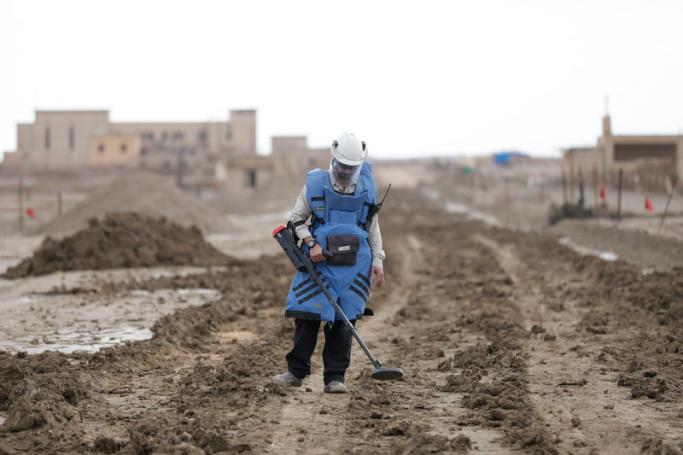The coronavirus pandemic forced the suspension of landmine clearance in several countries and related restrictions took a heavy toll on victim assistance services, an annual monitoring report said on Thursday.
The Landmine Monitor 2020 also recorded a continuing high number of civilian casualties from mines, cluster munitions and similar explosives, and warned funding for mine clearance was slipping.
The report said at least 5,554 casualties of mines and explosive remnants of war were recorded in 2019 across 55 states and territories, including at least 2,170 deaths.
The overall number of casualties was down from from 6,897 the year before, and the peak of 9,439 reached in 2016.
However, it remains far higher than the all-time low of 3,457 registered in 2013.
"The significant upsurge in recorded casualties since 2014 is primarily due to large numbers of casualties in relatively few countries with intensive armed conflicts, involving the large-scale use of improvised mines," the report said.
Last year's victims remained predominantly male and civilian, with a notable toll on those aged under 18.
The report found that there were at least 1,562 child casualties in 2019 -- 35 percent of all casualties for whom the age group was known, and 43 percent of all civilian casualties where the age of the victim was registered.
The report said Myanmar was the only country whose state forces had used anti-personnel mines since mid-2019.
But it noted rising use among non-state armed groups in countries including Afghanistan, Colombia, India, Libya, Myanmar, and Pakistan.
- 'Lives and limbs' -
Some 164 countries are bound by the landmark Mine Ban Treaty struck in 1997.
Ten of those states are thought to have "massive anti-personnel mine contamination", including Afghanistan, Ethiopia, Thailand, Turkey and Ukraine.
"Every mine left in the ground represents a human toll in lives and limbs lost," said Margaret Arach Orech, ambassador for the International Campaign to Ban Landmines (ICBL).
At least 156 square kilometres of land was reported cleared of landmines last year, mainly in Afghanistan, Cambodia, Croatia and Iraq, and more than 123,000 anti-personnel mines were cleared and destroyed.
In early 2020, Chile declared it had completed clearance of all mined areas.
And the United Kingdom announced on Tuesday that the Falkland Islands had finally been cleared of landmines from the 1982 conflict between Britain and Argentina, despite the impact of Covid-19.
The coronavirus pandemic forced the temporary suspension of mine clearing in 12 states and territories, including the Falklands.
Victim assistance was "strongly impacted" by the virus restrictions, preventing survivors from accessing services, the monitor said.
Meanwhile risk education programmes were also impeded, with face-to-face sessions in affected communities reduced.
As for stockpiled landmines, countries signed up to the treaty have so far destroyed more than 55 million, including more than 269,000 last year.
Botswana, Brazil and Uruguay reported the destruction of their remaining retained mines in 2019.
The annual report is produced by the Landmine and Cluster Munition Monitor, the research and monitoring arm of the ICBL and the Cluster Munition Coalition NGOs.
© AFP












